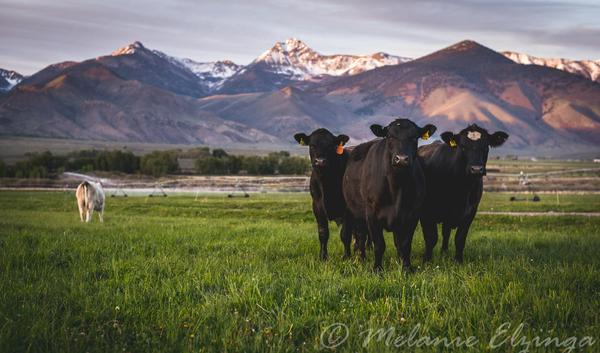
I’ve never been fond of the rock and roll hybridized country music. I enjoy either, but not the bastard child of both. It turns out that Black Angus mama cows don’t particularly show affinity for it either.
Maybe it was just the sheer 85 decibel volume of it. A big speaker boom box pulsed out the country beat from its place high on the fence above the working corrals of the G-5 ranch on this late winter day in 2002. The G-5 was outside Avon, Montana, and we had 200 cows to run down the chute.
My crew was made up of 3 twenty-something cowboys from the outfit and their mom. Our job: authenticate birthdate records, verify pregnancy and get a veterinarian to inspect each cow for health as they came up to the neck catch. I had agreed to purchase the cows after I walked through them all several weeks earlier, provided they would pass my vet exams. For every one that verified, I placed my ear tag in. She was then officially my property. Four lumbering semi-trucks rolled into the soft mud around the corrals, awaiting the pregnant procession of cows that would be loaded for the 5 hour trip to Alderspring.
I should have known it was going to be an interesting day when the young cowboys gathered them in the wee hours of morning on snowmobiles, roaring around the formerly peaceful ranch meadows at a reverberating 60 MPH full throttle. And now that we arrived at the chute, they cranked up the boom box…commencing an incessant thumping beat with whining redneck rockers on vocals.
Cattle were pushed forward by whistles, yelling and prodding with sticks. If non-compliant, they received a butt shock from the electric HotShot. There was plenty of beer, and a continuous oration of BS among the cowboys. Every now and then a scream emitted from their mother with a passionate blue streak of cussing that followed. One of her reprobate cowhands (and sons) blasted her butt with the HotShot…again!
I thought about saying something, but one look at my 4 truck drivers clocking time while watching over the far loading chute fence convinced me otherwise. My old cowhand neighbor, Ron Alder, repeatedly told me that you always want cattle you purchase to “have a better home than the one they left.†I was pretty sure they would like it better where there were no HotShots, let alone a chute-side boombox.
It was pretty different from what we do. Ron had taught me the value of handling cattle quietly, and reading and practicing stockmanship had upped my game. We didn’t always work cattle fast, but we did do it quietly. But we’re kind of odd. I wouldn’t call anything these folks did as abusive, and it is pretty typical western cattle handling procedures to use loud noise and hot shots to move cattle through the chute. It just wasn’t ….quiet.
It did happen fast. The music and beer pushed that crew to speed, and the cows could not wait to get in the peaceful contrast of those semi-trucks (in fact, they were pretty hard to get out of there 5 hours later). As the trucks lumbered off, mom and boys graciously offered dinner, which my hungry, long ways from home body could not refuse. So we headed up to the house, kicked off our crap-crusted boots, and headed into the warm kitchen. I liked these people- solid, salt-of-the-earth (I still email back and forth with them today). I couldn’t judge them for the way they handled cattle. It’s what nearly everyone does in commercial cow production today.
It was a simple and satisfying lunch of fresh cornbread with their local honey, beans and burgers. One of the cowboys grabbed a honey bear full of crystallized honey and threw it in the microwave, turned it on high…and forgot about it. While carrying on in sparkling conversation, he recalled the needed cornbread condiment and sauntered over to the microwave. He poked the door release, and we were hit with an atom bomb of vaporized honey gas from a bear that blew his guts out in the microwave heat. The gas cloud covered the entire house, from floor to ceiling, making couches unsittable, clocks untickable and doorknobs untouchable. Is there such a thing as bad bovine karma?
*****************************
A soft rain is falling on Alderspring as I write this, putting down even more snow on the highest ranges around us. It means that our hills below those white peaks are verdant like Ireland right now. It’s given us a little margin for turning out our beeves on the ranges. We’re looking at the first of June now, where 250 head or so and 3 cowboys or cowgirls will leave for several months, and travel hundreds of miles over some of the greatest wild grass on earth.
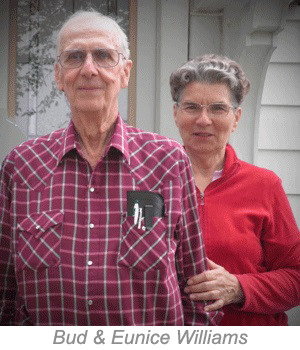
Training for the 9 person range crew starts next week (the three crews rotate throughout the summer, placing 3 people up there 24/7). There will be 3 days of stockmanship—handling beeves quietly as partners—first on foot, then on horseback. We’ll have Dave Ellis, veteran stockman and student of Bud and Eunice Williams training the crew in “getting the beeves to want to do what you need them to do.â€
Bud and Eunice were the definitive animal handling/husbandry authorities in the world, and although their methods were highly controversial, they were founded on the principles of considerate partnership with the animals they herded. I say “were†because, sadly, Bud passed away in 2012. Unfortunately, almost all beef producers across our western world move their cattle using the 2 “Fâ€s: Fear and Force. The Avon boys just did what everyone else did: They whistled at them. They poked them with sticks. They used HotShots (on anyone). They drove them from behind (force).
Bud, on the other hand, pioneered the use of light pressure, followed by the relief and settling of a lengthy release. He’d singlehandedly perform incredible stockmanship tasks. Once, he was flown by helicopter to the high Arctic to help herd reindeer on a 5 million acre unfenced and wild landscape. Where 10 or so Eskimos had herded the same herds on snowmobiles (sound familiar?), often yelling or waving at them, Bud was airdropped on those 5 million acres of tundra… alone and on foot.
After hiking some 30 miles across the rough tundra vegetation, Bud located the 1500 reindeer, trained them to his techniques, and convinced them to travel with him across 20 miles of featureless expanse to a tiny fenced corral by the very next day. He asked them to enter the corral, and they did.
We’ve already started training our beeves with these principles on the home ranch, where they are on our lush spring organic meadows that they share with curlews and cranes. We posted a couple of recent facebook videos to show folks how beeves have easily moved under our guidance in the past week.
The stockmanship transitions nicely to the packing portion of training, where Dave will teach how to pack camps and gear in on horseback to the remotest corners of our 70 square mile range, where there are no roads to drive gear, food and water in where the beeves will roam. We’ll squeeze a certified first aid instructor in there, as there is plenty that can go awry in that rattlesnake-infested and cliff-strewn landscape.
All the while, the crew will learn horsemanship. That horse will be their partner and stalwart companion in that landscape, but they have to build a relationship based on mutual trust to get there. It starts now.
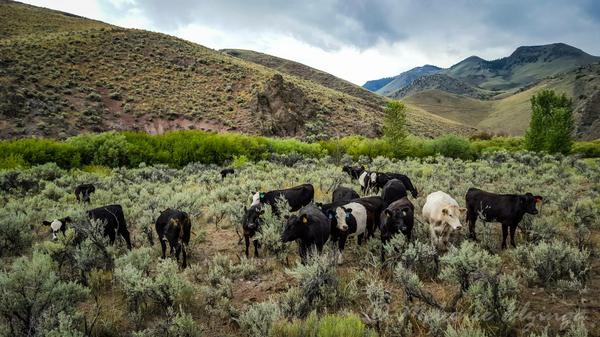
It seems like a lot to do to just raise organic grass fed beef, but this isn’t what I call what we are doing. Sure, it falls into that food classification in a food system run amok. But there’s far more to it for us than that. It is a long line of connectivity between a ribeye or burger on your plate with the wild landscape that it comes from. For this kind of agriculture is the only one I know of that complements and sustains the functionality of native ecosystems while providing you with the best fruit of the land. It is true permaculture. All other forms of agriculture destroy wildness before yielding their crop; they tear and rip the soil with plow or tiller. They kill the vegetation on it. They destroy native animal habitat…and all these are within the confines of “grass fed†or even “organic.†Our harvest is simple. We have beeves. We have grass. We put them together, in a way that enhances both.
But we have learned from that landscape, and had some good teachers in artisans of the land who have gone before us. You have read about them in the pages of previous newsletters. And it has made us into careful stewards of the wild habitats where we roam. For example, in our camps, we pride ourselves in leaving no trace. Fire scars are removed, and the ground raked where we left tracks or bedroll impressions. I remember last fall when we gave a tour up in our Quaking Aspen region of Little Hat Creek, where we chose to eat lunch. I told the 12 participants that we camped near our lunch spot, and asked if they could tell where we had. That camp was one of our longest duration camps—nearly 25 days and nights with 2 or 3 people, 3 horses, 3 dogs and 150 head of cattle—each night.
They couldn’t find the camp spot in the unbroken grass, shaded by trembling aspen leaves. In fact, to their surprise, we were sitting right in the middle of it. It was a potential signature on the land that we erased, in our sojourning view of how we see that precious and renewable resource of wild pastures.
You are probably noticing a unifying principle across what we do with our animals and the land they live on. It’s us trying to work husbandry. That’s a step further than stewardship, because like the human term of husband, we are connected to the land and the animals we share it with by a deeper attribute: it’s a love for the landscape, the animals and what we do by bringing them together.
Alderspring husbandry. Yes, we will continue to learn and try. Thanks for being our partner in it.
Happy Trails.
Glenn, Caryl and Girls at Alderspring Ranch

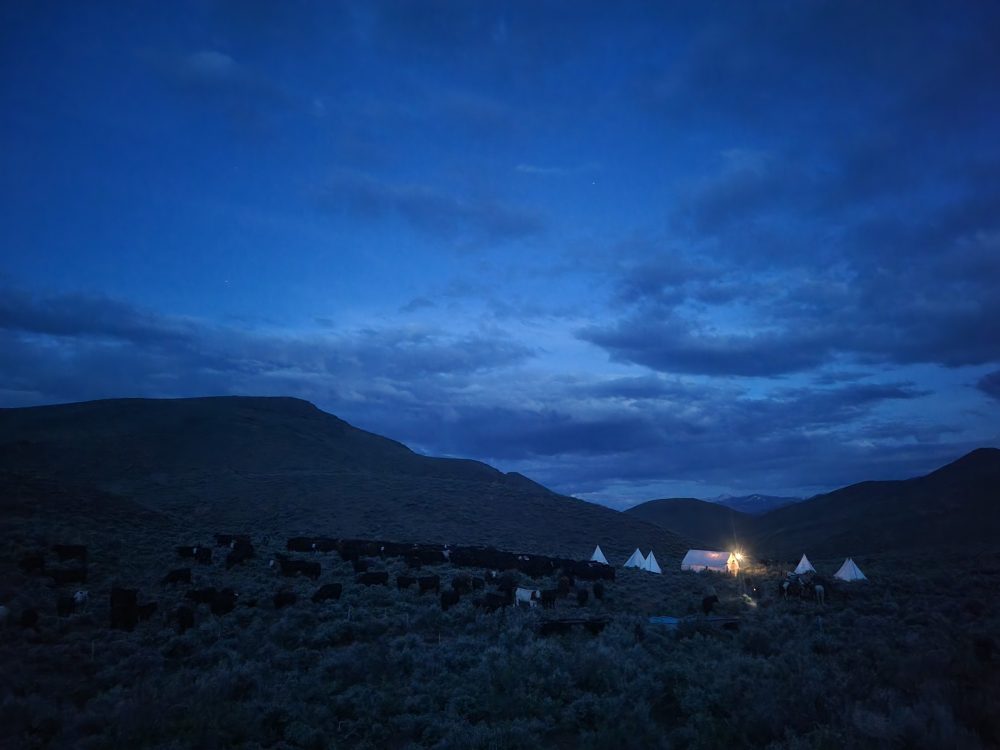
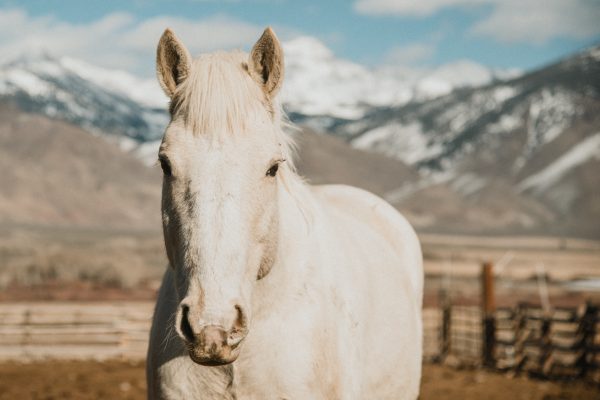

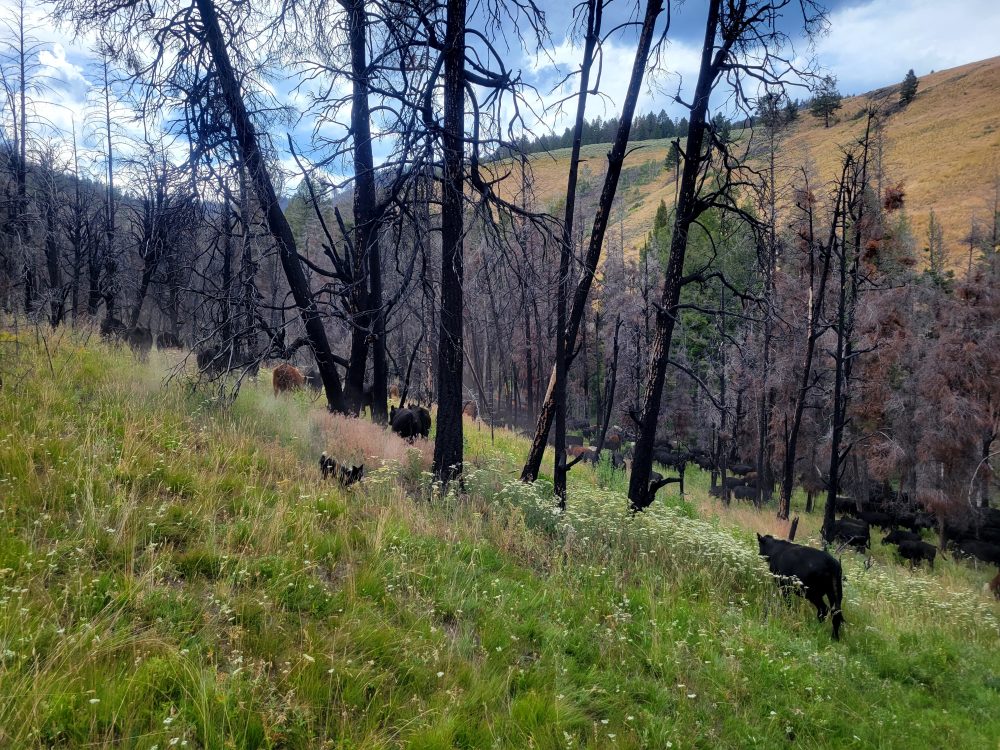


Leo Younger
Thoughtful your story is for us. I had to stop reading several times, overcome with emotion, bowing my head, weeping in recognition of the love you have for the lives, fauna and flora and microbial, you care for.
Perry
My wife and I visited Kenya and Tanzania last August. Several of our excursions into the Serengeti countryside brought us into contact with the native Masai people for whom ownership of cattle has long been integral to their culture and livelihood. Your piece about quietly managing your livestock prompted me to think about the calmness that I observed as large herds of their cattle were being escorted to grazing areas by just one or two Masai villagers. I saw long processions of cows obediently trudging along in a generally orderly fashion, following a Masai on foot, with another person walking somewhere beside the group. There was no yelling, no running, no signs of stress on the part of the animals or the humans. It was an interesting contrast to how typical livestock management was described in your excellent article, which I really enjoyed reading.
Jeff Zaremsky
You mentioned in the email this was an older newsletter. In the newsletter you mentioned:
“We posted a couple of recent facebook videos to show folks how beeves have easily moved under our guidance in the past week.”
Can you give a link to those videos?